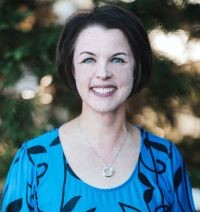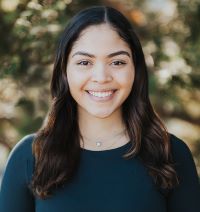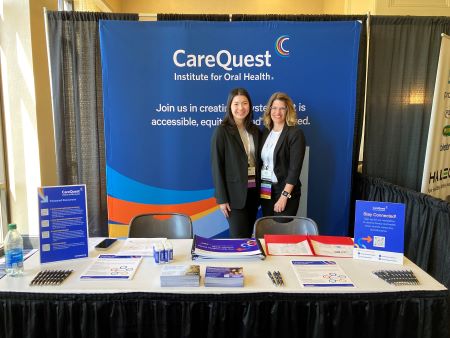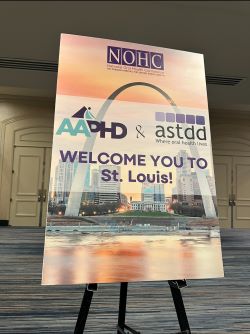Enter your email to receive the CareQuest newsletter:
April 23, 2024
By Lisa J. Heaton, PhD, and Paige Martin, BA, science writers at CareQuest Institute


Last week, the National Oral Health Conference (NOHC) celebrated its 25th joint meeting of the Association of State and Territorial Dental Directors (ASTDD) and the American Association for Public Health Dentistry (AAPHD) in St. Louis, Missouri. The conference is considered a “premier meeting for dental public health” — and CareQuest Institute was proud to be the Platinum Sponsor of this year’s event.
With a total of 9 weekend workshops, 46 oral sessions, 48 round table presentations, and 78 poster presentations, the 2024 NOHC provided the opportunity for 750 attendees — including oral health professionals, researchers, and all interested in dental public health — to connect and engage in enriching discussions of how to lead efforts toward improving the oral health of the public.
What Was Everyone Talking About?
The Welcome & Plenary session, Advancing Oral Health Equity: Perspectives from the Federal Front, set the tone of the conference, highlighting current agency-based strategies and initiatives advancing oral health equity across the lifespan. This well-attended session affirmed the collective acknowledgment from the federal front of the connection between oral health, physical, and behavioral health, and the continued work necessary to advance oral health equity.

A recurring theme of several sessions included the importance of community engagement in oral health systems, data collection, and research. CareQuest Institute’s very own Kelly Schroeder, RDH, MS and Hannah Cheung, MPH, MS, RDH, presented alongside Scott Darius, JD, in a session entitled Equitable Data Collection, Analysis, and Dissemination: Creating Standards and Protocols. These presenters discussed the importance of community input in data collection and storytelling. This well-attended, interactive session introduced the topic of equitable data collection — a framework used to better recognize the perspectives and experiences of communities to improve barriers to oral health. Speakers emphasized the role of community voice in providing a more accurate and complete picture to determine what is most needed to support community members.
Annaliese Cothron, DHS, from the American Institute of Dental Public Health (AIDPH) reiterated similar messaging in Dismantling Disparities and Empowering Marginalized Communities in Oral Health Research. Cothron discussed the benefits of a community-engaged oral health research approach and introduced the AIDPH Oral Health Community Advisory Board — an effort to engage historically marginalized community members with valuable insights to better inform patient-centered outcomes and comparative effectiveness research.
A Focus on Innovation and Integration
It was exciting to hear many speakers emphasize that expanding access to oral health coverage (e.g., through Medicaid or Medicare) is necessary, but not sufficient, to making oral health care more accessible, equitable, and integrated for all. Even if all children and adults had some type of coverage for oral health care, there still exist barriers to receiving oral health care that create inequities. Nearly 70 million individuals in the US live in a dental health provider shortage area, requiring those individuals to travel long distances and miss time away from work or school to receive oral health care. Adults who experience discrimination in the oral health care setting are less likely to plan to see a dentist for preventive care. Further, only about one-third of dentists in the US treat patients with Medicaid dental insurance.
In an effort to address some of these factors, NOHC included exciting discussions about innovative care delivery methods and systems such as teledentistry, virtual dental homes, and integrating oral health care into primary care and behavioral health settings. As an example, speakers from the Children’s Health Alliance of Wisconsin discussed a successful program in which, to date, 18 dental hygienists have been fully integrated into pediatric and obstetric clinics across 11 health systems. This program is made possible by Direct Access, or the ability of a dental hygienist to provide care without the specific authorization or supervision of a dentist. As of 2021, 42 US states permit direct access to dental hygienists, making integrating dental hygienists into non-dental settings a feasible option in most states.
Of note, CareQuest Institute was cited in many presentations throughout the conference as a key reason an organization or group was able to turn an idea for a research project or program into a reality. Examples of this include the MOTIVATE at Home Program, an oral health education program designed particularly for care partners of older adults, in addition to the Schuyler Center’s Future Oral Health Workforce Project: Oral Health Equity Through Workforce Design.
Top 3 Takeaways from St. Louis
What are the top three learnings we’re taking back as we focus on the work ahead in 2024?

- Truly integrating medical care, oral health, and behavioral health requires buy-in, adaptability, and ongoing support from multiple stakeholders. We may think of this type of integration as something decided upon and decreed by organizational leadership. However, these efforts will likely not be implemented successfully, and most certainly will not be sustained, without full participation and enthusiasm from funders, health care providers, staff members, communities, patients, and patients’ caregivers. True integration requires a collective, sustained effort to produce meaningful change in individuals’ oral, behavioral, and overall health.
- When considering interventions to improve a community’s health, researchers must engage with the community from the very start to establish collaborative efforts, centering the community and its needs and desires. While researchers may have expertise in designing oral health interventions, the members of the community most impacted by inequities are most knowledgeable about what is most needed by the community and what types of interventions would be most relevant and acceptable to its members. The lived experience of community members is just as important as the technical expertise of the researchers in developing effective and sustainable efforts to improve a community’s health.
- Data collection must expand beyond what is considered “standard” in the research world. Equitable data collection should accurately reflect the communities in which it is used, rather than employing a few broad response categories that can mask true inequities. Additionally, storytelling is another form of data collection that provides rich, descriptive material that adds to the understanding of a community and its needs. We cannot change what we cannot identify. Using community input to most accurately reflect the identities and needs of their members is critical to helping a community design efforts to improve their health.